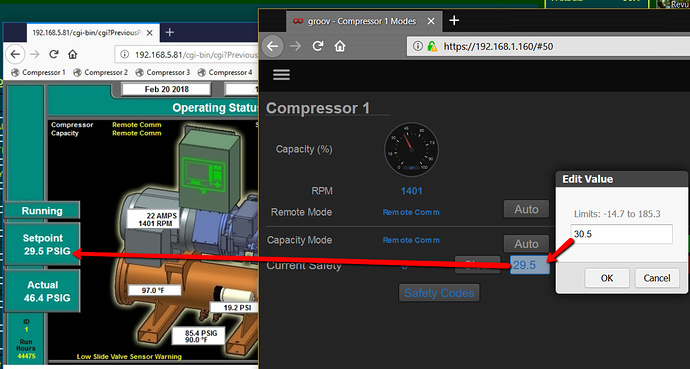In the general case, you can’t scale a number in groov right now. There are a few special cases where you can do it, Modbus being one of them. A couple gadgets allow it is well: the Round Gauge and Range Indicators off the top of my head.
The Linear mapper on Modbus tags works by interpolating a value from the Input range to one in the Scaled Result range. It’s best if you know the full range of values that will show up in your Input, but it should work without.
In this case, if you know your input value is going to range from 0 - 300 or so, you’d set that as the Input Range Limit in your Modbus tag configuration, and figure out what your output range is based on that. In your case, the output value is 1/10th of your input value, so you can just divide your output range limits by 10, giving you 0 - 30.
I went ahead and double checked this locally. I have a SNAP-PAC-R1 at my desk that I’m configuring as a Modbus device: I’m just using its scratchpad area as a place to stick values that I can read via our Modbus scanner.
I added a Modbus device to my groov project using my SNAP-PAC-R1’s IP address, and Slave ID 110. (Mapping the scratchpad’s memory locations into Modbus’s address space is a little confusing, involving doing some math from an MMP location into a Modbus Slave ID + register number combination.) I turned off 1-based addressing in my configuration, and then added 2 tags to the device.
First, a 32-bit integer (doesn’t matter whether signed or unsigned for now) at holding register number 2048. (That’s the first address in the integer scratchpad area space.)
Then, another 32-bit integer at the same register number, but this one I enabled scaling on. I turned on the Linear scaler, selected Float as my output type, set my Raw Input Limits from 0 - 300 (to fit 292 in the range we’re mapping from) and my Scaled Result limits to 0 - 30.
Closed out the device configuration stuff, created a new page with 2 gadgets on it: a Text Box pointing to that first plain 32-bit integer, and a Value gadget pointing to the scaled one. The Text Box gadget needed it’s acceptable values bumped up to let me type in 292.
Save my pages, switch to View, look at the new page I made. I entered 292 in the Text Box pointing to the plain integer, and the Value box now reads 29.20.





